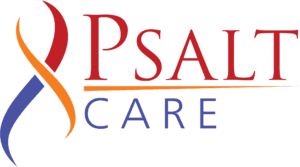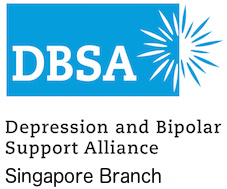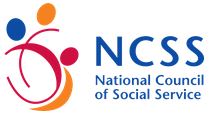Mental Health
Recovery Is Possible
Mental Health – some of the conditions we cover
Depression – a brief overview
Depression, a condition clinically referred to as Major Depressive Disorder (“MDD”), is a persistent feeling of sadness, loss of interest and despair. Unlike typical mood swings which are relatively transient, depression episodes can last for a considerable length of time if left undiagnosed and untreated.
Typical symptoms of depression include:
- Sense of sadness, moodiness and emptiness
- Feelings of hopelessness, pessimism and loss of interest
- Low energy levels, moving or talking very slowly
- Difficulty sleeping or early-morning awakening, or sleeping excessively
- Thoughts of death or suicide, including actual attempts at suicide.
Clinically speaking, a person would only be considered to have been in a state of depression if the sufferer has been in that condition for at least two weeks. It is not something that the sufferer can just ‘snap out of it’. Instead, persons suffering from depression has real challenges sometimes even getting out of bed, going about daily activities and routines. In more severe cases, there is the sense that there isn’t much in life worth living for.
According to the study ‘A population-based survey of Mental Disorders in Singapore’ by Chong et al, 2014, the lifetime prevalence of MDD in Singapore is 5.8{70e8081cec88996d9529cf9901dfc174d3c43dc7124981da8d93069252753486}.
Depression isn’t a weakness or just a poor view of life. It is an illness that require medical attention. The treatment may be long term but it is certainly treatable. The common drugs used for treating depression fall into the following classes:
- Selective serotonin reuptake inhibitors (SSRIs)
- Serotonin and norepinephrine reuptake inhibitors (SNRIs)
- Tricyclic antidepressant
- Dopamine reuptake blocker
- 5-HT1A, 5-HT2 and 5-HT3 receptor antagonists
- Monoamine oxidase inhibitors (MAOIs)
- Noradrenergic antagonist
Medication should be taken in consultation with a doctor on the type and dosage best suited for your condition. Most people get better with medication, psychotherapy or both. Belonging to a support group helps some members to have a greater sense of inspiration and purpose.
“The fortnightly DBSA Peer Support Group provided a safe space for me to share my struggles and learn from other peers with similar struggles. Together, we become stronger and resilient to adversities. “ Chris Tan
BIPOLAR – A brief overview
Bipolar disorder, clinically referred to as manic-depressive illness, is a mental condition characterized by unusual mood swings that may be quite extreme in its expression. It can vacillate between a sense of intense high/ euphoria (manic episode) and sudden sense of despair (depressive episode). Where the sense of despair is less severe, it is referred to as a hypomanic episode.
Broadly categorized, there are 4 types of Bipolar disorders:
- Bipolar 1 disorder – this is the so-called full-blown condition where the manic episode is very severe, either requiring immediate psychiatric attention or lasting for a period of seven days. In certain cases, depressive episodes lasting more than two weeks may also follow.
- Bipolar 2 disorder – typically understood to be unlike the full-blown condition, where the sufferer vacillates between depressive and hypomanic episodes.
- Cyclothymic disorder – where many hypomanic episodes are experienced over a period of 2 years
- Other Bipolar disorders – other combinations comprising a variation of the above disorders.
Sufferers of bipolar disorders experience extremes in emotional sensations, from a sudden sense of high – and all the related feelings of high energy levels, thinking and talking real fast, readiness to take on risky activities and also become easily irritated by things or people – to a stage of despair. Just as quickly, they can swing to the depressive state where the sense of hopelessness, loss of interest, forgetfulness and loss of meaning about life can set in.
It is common for bipolar sufferers to also be known to be suffering from alcohol or substance abuse, therefore making it sometimes difficult for friends and family to recognise the condition. Usually, sufferers seek help during their depressive phase rather than during the manic phase. Proper diagnosis by a doctor is an important first step in the recovery process.
Bipolar is a lifelong illness and the manic/ depressive episodes usually come back to afflict the sufferer from time to time. Medication, which typically includes mood stabilisers, atypical antipsychotics and antidepressants. Non-medicine therapies such as psychotherapy and support group sessions are also helpful in the recovery process.
ADHD – A brief overview
Attention Deficit Hyperactivity Disorder (“ADHD”), as the term itself suggests, is a mental condition characterized by the sufferer being unable to retain attention on any subject matter for a length of time, and where the mind engages in a constant flurry of thought activities. This often leaves the impression that the ADHD sufferer is disorganized or lacks the persistence to see a task or project through to completion. The hyperactivity is sometimes expressed in actions that are deemed to be inappropriate in social settings such as fidgeting or constant tapping on tables. Associated with this condition is the incidence of impulsive decisions, where words are spoken or actions are taken without prior or serious thoughts to the consequences or practicality of the decision.
Persons with the above conditions tend to exhibit the following apparent social/ work-related weaknesses:
- Overlooking certain details in a required task, missing items when on an errand
- Not well organized, and not following through with tasks sequentially, sometimes missing certain steps
- Not able to retain focus and attention when spoken to
- Easily distracted, mind tending to stray to other unrelated events.
Different sufferers will exhibit a variation of the above symptoms. Amphetamines are stimulants that are commonly used in the treatment of ADHD. Medication, taken in consultation with the doctor, will help to reduce the symptoms and improve overall functioning. Other therapies such as psychotherapy, group support sessions, education and mental training can contribute to the client being able to better manage his symptoms. Cultivating the habit of developing and following a daily “List of things to do” is particularly helpful for ADHD sufferers.
ANXIETY – A brief overview
Anxiety disorders are a group of mental conditions characterized by an inappropriate sense of fear of a perceived, usually ill-defined threat and worries about the future. It’s extreme, excessive and prolonged expression literally cripples the mind and body of the sufferer thus preventing him from being able to make any rational decision or take any action. Commonly included in this category of mental conditions are:
- General panic attacks
- Phobia
- Post-traumatic stress disorder
- Acute stress disorder
- Obsessive compulsive disorder
During an attack episode, the usual symptoms would be:
- Apprehension, confusion
- Feeling keyed-up or on-edge
- A sense of helplessness
- Pounding heart/ accelerated heart rate
- Difficulty in breathing
Antidepressants and antihistamines are commonly prescribed in the treatment of anxiety disorders. The condition can be managed with medication prescribed by a doctor, coupled with psychotherapy sessions that teach the sufferer the relevant coping skills. Cognitive Behaviour Therapy and Exposure and Relapse Prevention Therapies have been proven to be effective in helping sufferers manage their conditions.
“I have been battling depression and anxiety for a good part of my life. Only recently have I started seeking help from a psychologist. With the encouragement from friends, I have reached out to Psalt peer support group. Having only been to my first session, the group has already been such a tremendous help towards my road to recovery.
My attendance to the group has taught me skills like coping mechanisms, ways to look at issues with a more positive attitude. Most importantly, I realized that I am not alone. This group of people has been warm and welcoming towards me and that has made me feel comfortable being around them. It’s truly a great blessing to know them, to know Psalt care!” – Joyce
Addictions – A brief overview
Addictions is defined as an intense craving for something, be it a consumable item or an activity, with a loss of control over its use and continuing involvement with it despite the user being aware of its adverse consequences. The word itself is derived from a Latin term which means “enslaved” or “bound to” – a definition well understood by any person who has struggled to break free from an addiction, or has tried to help someone else to do so.
Until quite recently, the term addiction is usually used in connection with alcohol and powerful drugs. More recent research have shown that certain other pleasurable activities can also develop into addictions, such as:
- Overeating
- Gambling
- Shopping
- Sex, and
- Internet/ mobile games
Addictions are formed as a result of the brain’s development of tolerance. As we consume a certain item or pursue an activity, a sense of pleasure is derived. As we continue in that activity, the brain adapts in a way that makes the sought after substance or activity less pleasurable. Therefore the urge to consume in larger quantity or engage in that activity more frequently/ rigorously is created in order to achieve that desired level of pleasure.
A clear indication that a person is addicted to a substance or activity is when attempts at the cessation of the activity result in the experience of withdrawal symptoms such as irritability, intense craving, restlessness or depression. Persons with substance dependencies will show physical symptoms such as bloodshot eyes, changes in sleep patterns, sudden weight fluctuations, deterioration of physical appearance and or personal grooming and tremors, slurred speech or impaired coordination.
It is quite common that persons with substance abuse addictions to have a comorbidity of mental illness, and it is difficult in some cases to establish which came first. A fundamental principle in scientific research suggests that, despite its challenges, it is necessary to treat the comorbid conditions concurrently. Medication, coupled with behavioural therapies, are known to be effective in treating addictions. Initially developed for treating alcohol addictions, the well-known 12-Steps Alcoholics Anonymous approach may also be applied to the treatment of other addictions. These are:
- Admitting that we are powerless over our addictions
- Believe in a Higher Power (God) to help restore us to sanity
- Make a personal decision to quit our addiction (s)
- Make a searching and fearless moral inventory of ourselves
- Admit to God, to ourselves, and to another human the exact nature of our addiction (s)
- Entirely ready to trust God to remove all these defects of character
- Humbly ask God to remove our shortcomings
- Make a list of all persons we have harmed, and be willing to make amends to all of them
- Make direct amends to all such persons wherever possible
- Continue to take personal inventory and promptly admit any wrongdoings
- Seek through prayer and meditation a closer contact with God
- Having had this awakening, to spread the message


